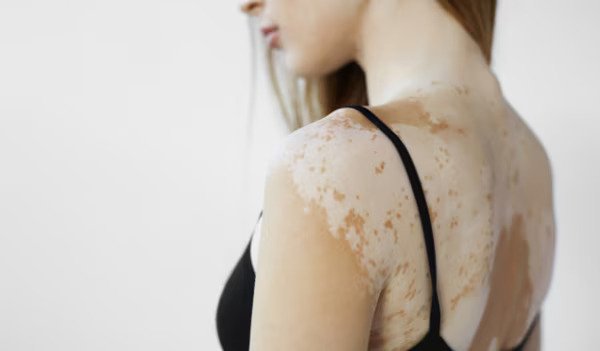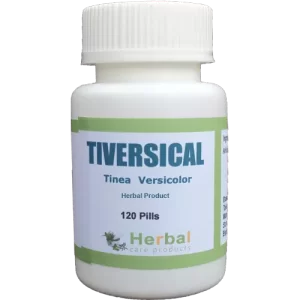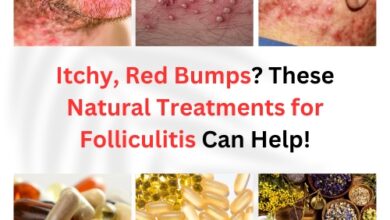The Best Natural Remedies for Tinea Versicolor: Say Goodbye to Fungal Infections!

What is Tinea Versicolor?
Tinea Versicolor, also known as pityriasis versicolor, is a common fungal infection that affects the skin. It is caused by an overgrowth of yeast on the skin, specifically the Malassezia fungus. This fungus is normally present on the skin, but certain factors can cause it to multiply and lead to an infection.
The infection usually appears as patches of discolored skin, which can be lighter or darker than the surrounding skin. These patches may be pink, red, tan, or brown and can occur anywhere on the body. Tinea Versicolor is not contagious and is usually harmless, but it can cause discomfort and self-consciousness due to its appearance.
Understanding the symptoms of Tinea Versicolor
The symptoms of Tinea Versicolor can vary from person to person. Some individuals may experience mild symptoms, while others may have more severe manifestations of the infection. Common symptoms include:
- Patches of discolored skin: The most noticeable symptom is the presence of patches on the skin that are lighter or darker than the surrounding areas. These patches may be scaly or itchy.
- Itching or irritation: Tinea Versicolor can cause itching or irritation, especially in areas where the patches are present. Scratching the affected areas can worsen the symptoms and lead to further skin damage.
- Increased sweating: The Malassezia fungus thrives in warm and moist environments. Therefore, individuals with Tinea Versicolor may notice an increase in sweating, especially in areas prone to sweating, such as the armpits, groin, and chest.
- Lack of response to sunlight: The affected patches may not tan like the surrounding skin when exposed to sunlight. This is due to the inhibition of melanin production by the fungus.
The drawbacks of conventional treatments
Conventional treatments for Tinea Versicolor typically involve the use of antifungal medications, such as topical creams or oral medications. While these treatments can be effective in eliminating the infection, they often come with drawbacks.
- Side effects: Antifungal medications can cause side effects such as skin irritation, redness, and dryness. In some cases, they may even cause allergic reactions. This can be particularly problematic for individuals with sensitive skin.
- Recurrence: Tinea Versicolor has a tendency to recur, even after successful treatment. This can be frustrating for individuals who have undergone conventional treatments, as they may have to deal with the infection repeatedly.
- Resistance: Over time, the fungus causing Tinea Versicolor can develop resistance to certain antifungal medications. This can make it more difficult to treat the infection effectively.
Benefits of natural remedies for Tinea Versicolor
Natural remedies for Tinea Versicolor offer several advantages over conventional treatments. These remedies are often gentler on the skin and can help address the root causes of the infection. Here are some of the benefits of using natural remedies:
- Minimal side effects: Natural remedies for Tinea Versicolor are generally safe and have minimal side effects. They are derived from natural sources and do not contain harsh chemicals that can irritate the skin.
- Addressing the root cause: Natural remedies focus on addressing the underlying factors that contribute to the overgrowth of the Malassezia fungus. They help restore the natural balance of the skin and strengthen the immune system, reducing the likelihood of recurrence.
- Supporting overall skin health: Natural remedies often promote overall skin health, in addition to treating the infection. They can nourish and moisturize the skin, soothe irritation, and improve skin texture and appearance.
Best natural remedies for Tinea Versicolor
- Tea tree oil: Tea tree oil has natural antifungal properties, making it an effective remedy for Tinea Versicolor. It can be applied topically to the affected areas using a carrier oil, such as coconut oil, to soothe the skin and eliminate the fungus.
- Apple cider vinegar: Apple cider vinegar has antifungal properties and can help restore the pH balance of the skin. It can be diluted with water and applied to the affected areas using a cotton ball or spray bottle.
- Aloe vera: Aloe vera has soothing and healing properties that can help alleviate the symptoms of Tinea Versicolor. It can be applied topically to the affected areas to reduce inflammation and promote skin repair.
Natural treatment options for Tinea Versicolor
In addition to specific remedies, there are several natural treatment options that can be incorporated into a comprehensive treatment plan for Tinea Versicolor. These options include:
- Maintaining good hygiene: Regularly washing and drying the affected areas can help prevent the overgrowth of the Malassezia fungus. It is important to use gentle cleansers and avoid harsh soaps that can strip the skin of its natural oils.
- Avoiding tight clothing: Wearing loose-fitting clothing allows for better air circulation and helps prevent excessive sweating, which can contribute to the growth of the fungus.
- Managing stress: Stress can weaken the immune system and make the body more susceptible to infections. Engaging in stress-reducing activities, such as meditation or yoga, can help support the body’s natural defenses.
Lifestyle changes to prevent Tinea Versicolor
Making certain lifestyle changes can also help prevent Tinea Versicolor and reduce the likelihood of recurrence. Here are some tips to consider:
- Avoid excessive sweating: Excessive sweating can create a favorable environment for the growth of the Malassezia fungus. Taking steps to minimize sweating, such as using antiperspirants or wearing breathable fabrics, can help prevent infection.
- Maintain a healthy diet: A balanced diet rich in vitamins and minerals can help support the immune system and promote overall skin health. Consuming foods high in antioxidants, such as fruits and vegetables, can also help combat fungal infections.
- Practice good skin hygiene: Keeping the skin clean and dry can help prevent the overgrowth of the Malassezia fungus. It is important to shower regularly, especially after exercising or sweating, and to dry the skin thoroughly.
How to create a natural treatment plan for Tinea Versicolor
Creating a natural treatment for Tinea Versicolor involves a combination of remedies and lifestyle changes. Here are some steps to follow when developing a treatment plan:
- Consult a healthcare professional: It is important to consult a healthcare professional for an accurate diagnosis and guidance on the most appropriate treatment options for your specific condition.
- Identify triggers: Pay attention to factors that may trigger the recurrence of Tinea Versicolor, such as certain fabrics, excessive sweating, or stress. Avoiding or minimizing these triggers can help prevent future infections.
- Incorporate natural remedies: Choose natural remedies that have been shown to be effective in treating Tinea Versicolor, such as tea tree oil or apple cider vinegar. Use them consistently as directed.
- Maintain a healthy lifestyle: Adopt healthy habits, such as maintaining good hygiene, practicing stress management techniques, and eating a balanced diet. These lifestyle changes can support the effectiveness of natural remedies and reduce the likelihood of recurrence.
Tips for effectively treating Tinea Versicolor naturally
To effectively treat Tinea Versicolor naturally, consider the following tips:
- Be patient: Natural remedies may take time to show results. It is important to be consistent and patient with your treatment plan, as it may take several weeks or even months to completely eliminate the infection.
- Monitor your symptoms: Keep track of the progress of your symptoms and make note of any changes or improvements. This will help you assess the effectiveness of your treatment plan and make adjustments if necessary.
- Stay positive: Dealing with a fungal infection can be frustrating, but maintaining a positive attitude can make the treatment process more manageable. Remember that Tinea Versicolor is a common condition and can be effectively treated with natural remedies.
Conclusion: Embracing natural remedies for Tinea Versicolor
Tinea Versicolor is a fungal infection that can cause discomfort and self-consciousness due to its appearance. While conventional treatments can be effective, they often come with drawbacks such as side effects and the potential for recurrence.
By embracing natural remedies for Tinea Versicolor, individuals can experience the benefits of gentler treatment options that address the root causes of the infection. Incorporating lifestyle changes and developing a comprehensive treatment plan can help prevent future infections and support overall skin health.
Say goodbye to fungal infections and explore the power of natural remedies for Tinea Versicolor. With patience, consistency, and a positive mindset, you can effectively treat this common condition and achieve healthy, vibrant skin.
CTA:
If you’re seeking a natural solution for Tinea Versicolor, our comprehensive guide on Natural Remedies for Tinea Versicolor provides all the information you need. Discover the best natural treatment options and learn how to treat Tinea Versicolor naturally. Say goodbye to fungal infections and embrace the power of natural remedies. Click here to learn more.





